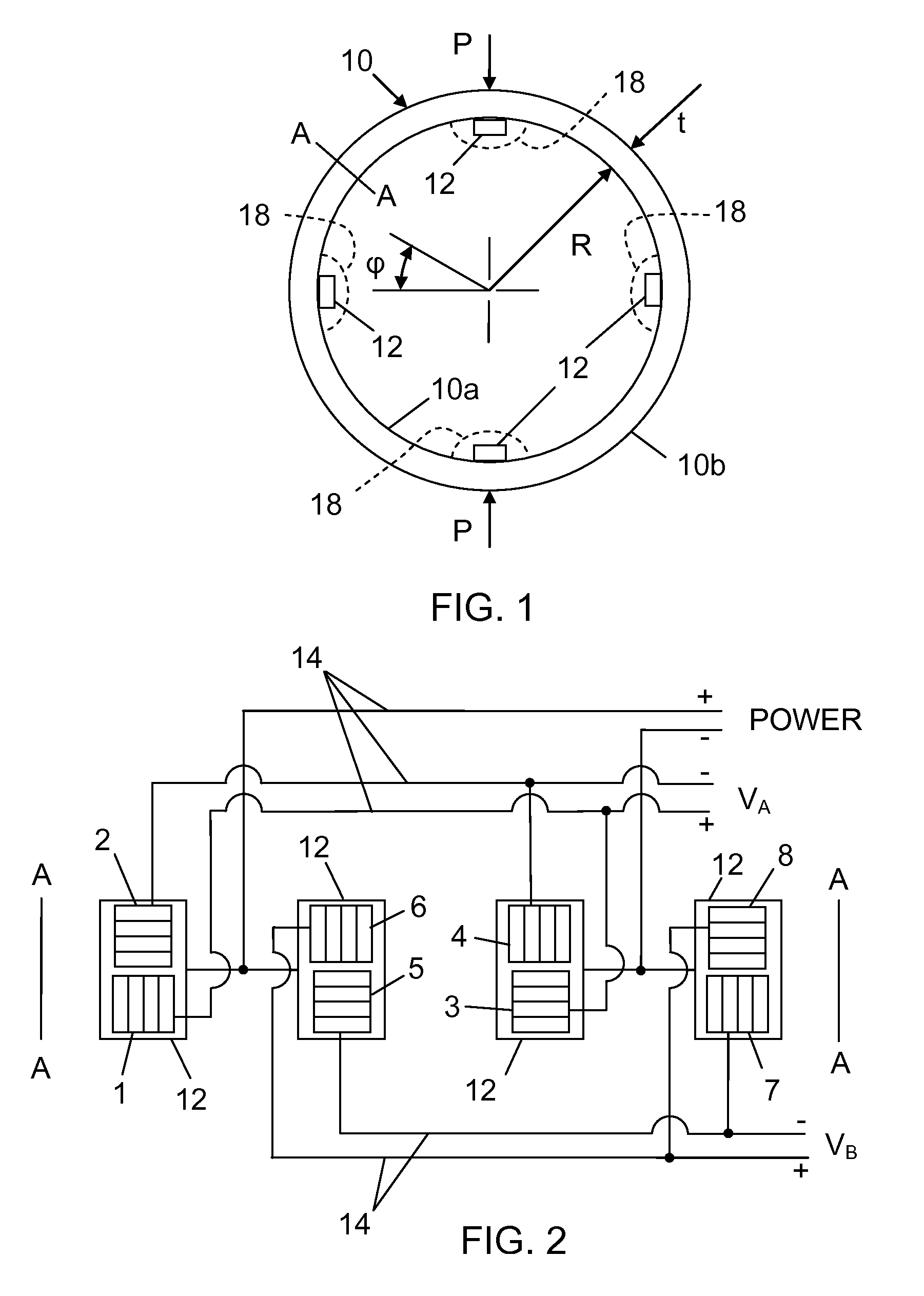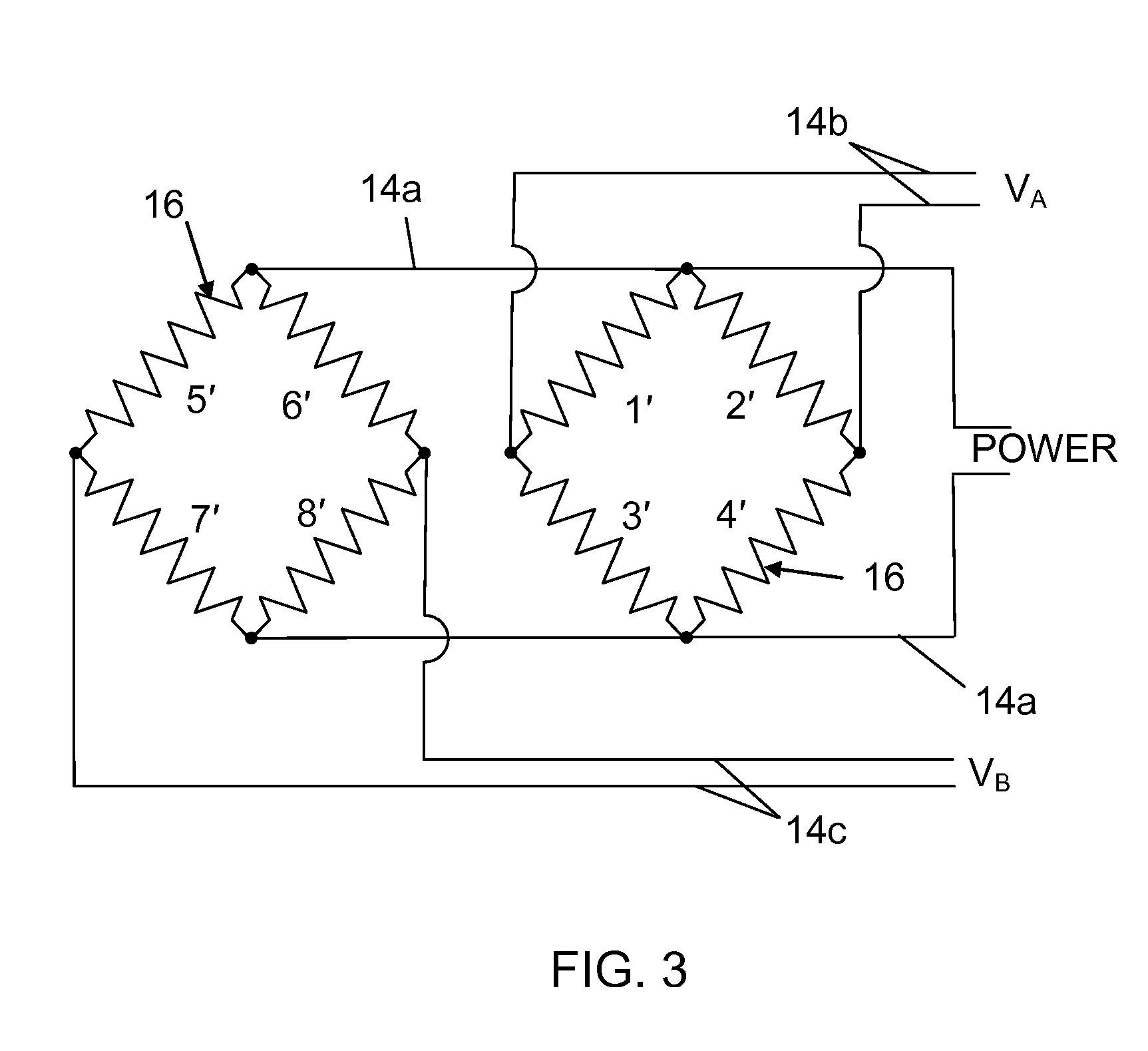Point load sensor
a load sensor and point technology, applied in the field of load sensors, can solve the problems of damage to the array, difficult measurement of the force applied by the handling system to the material, and inability to measure,
- Summary
- Abstract
- Description
- Claims
- Application Information
AI Technical Summary
Benefits of technology
Problems solved by technology
Method used
Image
Examples
Embodiment Construction
[0043]Referring to FIG. 1, there is shown a sensor ring 10, with an inner radius R and a thickness t. Diametrically opposed forces P are applied to the sensor ring 10, such that the sensor ring is placed in diametric compression. As is known in the art, there will be a bending moment through the thickness, t, of the sensor ring 10 at all points from this type of loading.
[0044]Considering a bending moment M at some angle φ, it is known in the art that the following relationship holds for a thin ring:
[0045]M=P·R2(cos(φ)-2π),-π2≤φ≤π2.[3]
It has also been shown in the art that the use of Equation [3] for thick rings is often sufficient. For thick rings having section thickness to radius ratios (t / R) as great as ½, the error introduced by the use of Equation [3] is approximately four percent.
[0046]From Equation [3], it can be surmised that the strain inside of the sensor ring 10 will be:
[0047]ɛ=P·R·t4·E·I(cos(φ)-2π),[4]
where:
[0048]ε=strain;
[0049]E=Young's modulus for the ring material...
PUM
| Property | Measurement | Unit |
|---|---|---|
| diametric compressive force | aaaaa | aaaaa |
| thickness | aaaaa | aaaaa |
| output voltages | aaaaa | aaaaa |
Abstract
Description
Claims
Application Information
 Login to View More
Login to View More - R&D
- Intellectual Property
- Life Sciences
- Materials
- Tech Scout
- Unparalleled Data Quality
- Higher Quality Content
- 60% Fewer Hallucinations
Browse by: Latest US Patents, China's latest patents, Technical Efficacy Thesaurus, Application Domain, Technology Topic, Popular Technical Reports.
© 2025 PatSnap. All rights reserved.Legal|Privacy policy|Modern Slavery Act Transparency Statement|Sitemap|About US| Contact US: help@patsnap.com



